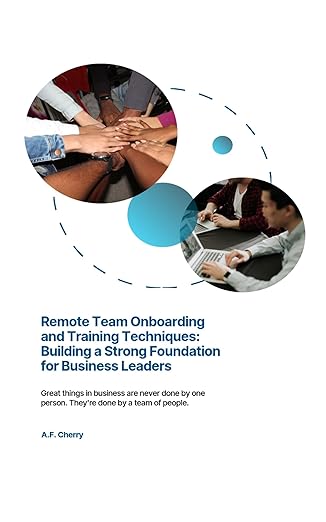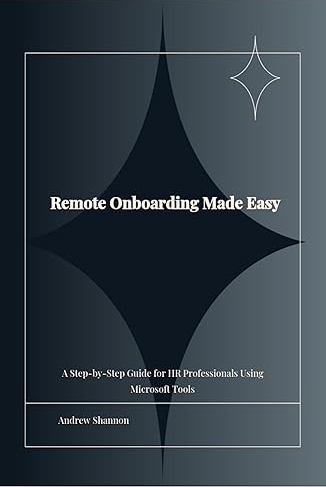It's not easy to focus and stay productive in our time — there's too much stress and too many distractions. Positive reinforcement helps maintain team spirit and improve results by encouraging the right actions. In this article, we'll explain how it works and why it can
Remote onboarding tips for success
A good start can mean a lifetime of success for your company — that’s why onboarding is such an important step. But how do you motivate your employees and set them up for success when they’re miles away from you? A pat on the back doesn’t quite work in the digital space of a Zoom call. In this article, we’ll cover everything you need to know about remote onboarding — and how to do it gracefully and effectively.
Key takeaways
Effective preparation and a clear plan for the first workday and week are key to successful onboarding
Appointing a mentor and involving the newcomer in the corporate culture helps them integrate into the team more quickly
Regular feedback and process iterations help improve onboarding and the adaptation of new employees
Preparation for the first work day
We all remember our first days at a new job — the stress, the fear, the shaky hands, way too much sweat — it’s all normal and completely justified. That very first day can shape the rest of an employee’s experience at your company, so it’s worth preparing all the necessary documents, guidelines, and instructions in advance to make their entry as smooth as possible.
This is especially true for hybrid and remote teams — it’s really easy to mess something up without the right experience (which most newcomers don’t have on day one) or without a manager showing them the ropes in real time. Keep in mind: these people will eventually work more or less independently, so it’s essential that all processes and guidelines are clearly understood — unless, of course, you enjoy answering dozens of questions every day.
Prepare a complete onboarding program in advance:
- Prepare a list of documents for signing — ideally in electronic format, so no time is wasted on the first day.
- Create all necessary accounts and access ahead of time: corporate email, Slack/Teams, task trackers, Notion, repositories, and internal portals.
- Put together a detailed plan for the first week: team meetings, technical and product onboarding, demo projects, or workshops. Make sure everything is added to the calendar so the newcomer can navigate their schedule with ease.
Assign a curator:
This should be someone from the team who’s available during the first few weeks. They’ll answer questions, explain how meetings work, show where to find key materials, and help integrate the newcomer into the team culture.
A curator breaks down the “awkwardness” barrier and helps new hires feel like part of the team faster, especially important in remote settings, where you can’t just walk over to a colleague’s desk.
Send a welcome letter in advance:
3–5 days before the start date, send a warm, detailed message. Introduce the team, outline what the first day will look like, attach a setup checklist, share links to the knowledge base, and include key contacts. This helps ease anxiety and shows the newcomer that they’re truly expected, not just remembered the morning they show up.
Take care of the technical setup:
- Ship or reimburse equipment in advance. Ensure everything works and that the necessary software and environment are ready to go.
- Provide clear instructions for setting up VPN, security tools, work apps, and the development environment.
- Explain how your team communicates: which platforms you use (Slack, Telegram, Zoom), what the communication rules are, and how the schedule works.

Building the foundation: the first day/week
We get it — the idea of tossing a new hire into the deep end with an “eh, they’ll figure it out” mindset can be pretty tempting. It’s simple, low-effort, and hey, sometimes it even works. But here’s the thing: your new employee isn’t the only one trying to make a great first impression — it’s a two-way street.
Making sure they understand how your company operates isn’t just helpful; it’s essential for building a long-term, successful partnership.
Here are a few steps you can take to create a sense of trust and belonging right from the get-go:
- Virtual welcome and team introduction. A new hire should feel like part of the team from day one — and that means more than just dropping a link to the group chat. Prepare a short, friendly welcome video from the founder or team lead, sharing the company’s mission and vibe. Add an intro section on your work platform with team photos and short bios. It’s a simple gesture that eases anxiety and helps the newcomer feel like they’re already part of something.
- Online tour and live intros with the team. Set up a few quick Zoom calls during the first week — one-on-one meetings with the manager, the team, HR, and, if possible, someone from leadership. This isn’t just a box to tick; it gives the new hire a feel for the company structure, roles, and culture. People need to know who’s who — and who to go to for what.
- Clarity on goals and expectations. From the very beginning, make sure your new hire understands not just what they’re supposed to do, but why. Share a 30-60-90 day roadmap with clear milestones. This gives direction, builds confidence, and helps them track their own progress early on.
- Communication culture. How does your team actually communicate? Where should people ask questions? Are tasks discussed in Zoom meetings, in comment threads, or within a project tracker? Set expectations clearly — and put them in writing. This is where a tool like Taskee can really come in handy.
And don’t get us wrong — you don’t have to be one of those super laid-back, quirky startups that live for employee experience. Even if your company has a more traditional, structured culture, it’s still crucial that new hires understand “the vibe” and how things work. Because at the end of the day, culture is what makes people stay.
Integrating new hires into your culture
Now to the more intricate stuff. Remote work is, without a doubt, great — freedom, flexible schedules, your favorite coffee maker exactly where you want it — countless perks, really. But it also comes with its own unique set of challenges, the biggest being a constant feeling of isolation and loneliness.
In traditional office culture, things like smoke and coffee breaks, small talk with coworkers, and random elevator chats all contribute to a sense of community and belonging. And even if you despise office culture and all the chit-chat that comes with it, you can’t deny its value for your mental well-being.
So yes, to recreate that sense of community in a digital space, you’ll need to jump through a few hoops:
- A culture of engagement is a system. Build rituals and habits that foster belonging. It could be a company-wide Friday sync with quick updates and shoutouts, or monthly AMA sessions with the founders where anyone can ask anything. The key is to make engagement systematic, not something that depends on one enthusiastic HR person keeping the vibe alive.
- Regular feedback: don’t wait for the quarterly review. One-on-ones are a must. During the first week, they should happen almost daily; afterward, aim for at least every two weeks. But don’t confuse this with micromanagement — it’s a point of connection. What’s clear? What’s confusing? How’s the mood? In a new work culture, employees need feedback to know they’re on the right track.
- Virtual informality isn’t an afterthought. Make space for non-work interactions. Interest-based group chats, weekly virtual coffee breaks (randomly pairing teammates), game nights, mini-quizzes — anything that helps people see each other as more than just avatars on a screen. The goal isn’t to force participation, but to invite it. Culture is built through voluntary engagement.
If your new hire feels at home the moment they open the group chat, your job as a manager is basically done. In the long run, that means one thing: a loyal team member who not only fits into your company culture but also helps shape it.
Measuring success and improving
A static Notion page is certainly a good start, but let’s be honest, it won’t take you very far. Onboarding isn’t just something that should be dynamic — it has to be, if you want it to actually work.
Yes, there are even specific metrics to track, you numbers-maniac. So here’s what you need to know to figure out whether your onboarding process is a hit… or if it needs a little tuning up:
Metrics that matter. Gut feelings won’t cut it. To truly understand how effective your onboarding is, you need to look at hard data:
- Time to productivity. How long does it take for a new hire to start delivering real value? Two weeks? Two months? Tracking this across roles and teams gives you insights you can act on.
- Onboarding NPS. Ask one simple question: “Would you recommend our onboarding to a friend?” It’s a quick way to gauge overall sentiment.
- Pulse surveys. Run these on days 3, 7, and 30. Find out: Is everything clear? Do they know what to do, whom to talk to, and where to find information?
Regular feedback collection. Don’t wait three months to find out they “didn’t understand anything the first week.” Use short async surveys or feedback forms in Notion or Typeform. A simple framework: What was helpful? What was confusing? What would you improve? The value comes not from individual responses, but from patterns over time.
Continuous iteration: treat onboarding like a product. The best companies treat onboarding like an evolving product. They gather data, hold retrospectives after each hire, and make changes in real time. Things to iterate on:
- Timing and format of meetings
- Structure and clarity of training materials
- Communication of goals and company values
- Technical setup and access management
Involve the team. Have team leads, mentors, and even peers share feedback after each onboarding cycle. Fresh eyes catch things you might miss.
And don’t be afraid to experiment! The goal isn’t perfection — it’s progress. Keep adapting until onboarding becomes not just a process, but a standout part of your company culture.
Interesting fact 
Research by Microsoft has shown that employees who met with their managers at least once during their first week were 8% more likely to express an intention to stay with the company and spent three times more time collaborating with colleagues.
Conclusion
Remote onboarding is more than just a formality — it's a crucial step that helps new hires quickly adapt and start contributing to the company. Preparation, attention to detail, and support throughout the process can be the key to successful integration and long-term employee productivity.
Related articles:
To maintain long-term health, check out the Role of physical exercise in remote work: health and productivity tips.
To boost team productivity, explore Positive Reinforcement in task management to enhance team performance.
To strengthen team spirit among employees, learn How to build a strong remote work culture: key strategies for success.
Recommended reading 

"Remote, Inc.: How to Thrive at Work . . . Wherever You Are"
A practical guide to effective remote work, including strategies for successfully onboarding new employees.
On Amazon
"Remote Team Onboarding and Training Techniques"
A hands-on guide to implementing an effective onboarding and training process for remote teams.
On Amazon
"Remote Onboarding Made Easy"
A practical guide to organizing remote onboarding using Microsoft tools, including Teams, SharePoint, and OneDrive.
On Amazon






